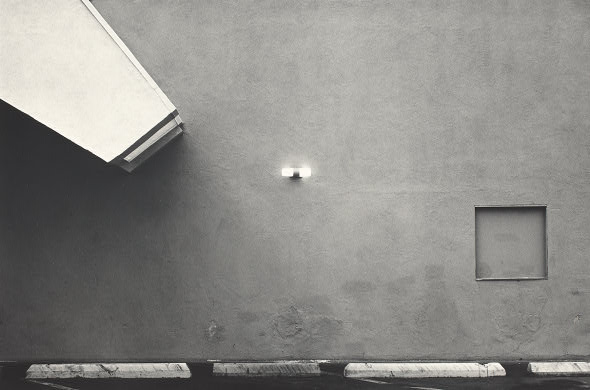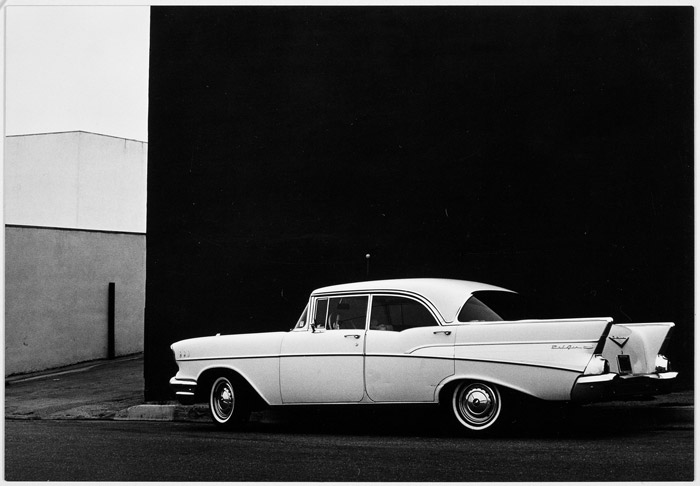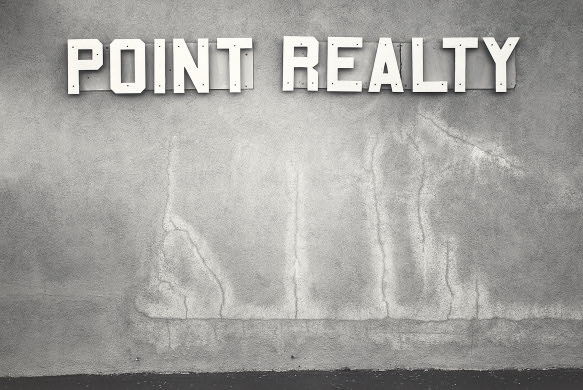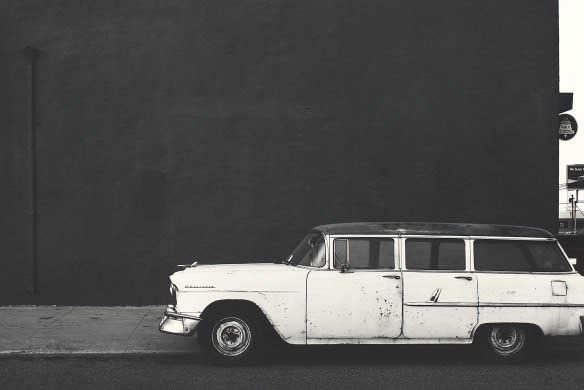LEWIS BALTZ “PROTOTYPES” ON VIEW AT THE NATIONAL GALLERY, WASHINGTON, DC UNTIL JULY 31, 2011
I apologize for the long silence – I was overwhelmed by exhibitions and other deadlines, but hopefully I have a few new things to share from visits to the Catherine Opie show at the ICA in Boston, and the Grazia Toderi installations at the Hirshhorn, and the superb Lewis Baltz show at the National Gallery of Art, both in Washington, DC.
Over the years I have seen Lewis Baltz’s photographs in small groupings most recently at the Whitney and a little while back in a Chelsea gallery New Topographics themed show. I had found his photographs austere, flinty but potent, formally diagrammatic with deep inky blacks, yet not at all easily pleasurable like the photographs of Aaron Siskind or Harry Callahan.
Yet seeing the 60+ small photographs from the “Prototypes” series all together in this NGA show ramped up my admiration. The photographs had such a distinctive feel and look that I was tugged into his notion of the American landscape – tough, unsentimental, not-sleek, practical, unheroic. I circled the galleries several times, marveling that such modest-sized prints – roughly 6 by 9 inches could wield such power. The wall text explained that Baltz “inked the edges of many of his prints and mounted them so that they project forward from their mat board rather than recede behind it. With this technique, he minimized the illusion of his photographs as “windows on the world” and stressed instead their nature as independent objects.”
And for a long time I have shared with my students a text by Lewis Baltz – his review of “The New West” by Robert Adams, from a 1975 issue of Art in America. I will quote at length from this, as what he writes is insightful about photography and his own work and is one of the best examples that I know of an artist speaking about a fellow artists work with a profound understanding:
“The ideal photographic document would appear to be without author or art. Yet, of course photographs, despite their verisimilitude, are abstractions; their information is selective and incomplete. The power of the documentary photograph is linked to its capacity to inform as well as to reflect our perception of the external world. In view of this it becomes possible, for example, to marvel at the striking resemblance the rural south still bears to Walker Evans’ ‘30s photos.”
Thirty-five years ago, before media theory quotes from Baudrillard became a photography theory staple, Baltz was aware of how our reading and understanding of the world was aggressively influenced by images.
Baltz continues in his review to say: “Adams’ insistence on the ordinary and the typical, as well as on the verifiable function of picture taking, is a prophylactic strategy against our culture’s increasing suspicion that photography, if not an outright lie, is at best a willful distortion of the world. By confining his attentions to the most commonplace objects and events, and by using his camera in the most direct and uninflected manner, Adams builds a series of points of correspondence between the viewer’s experience of the world and his own. Through this means he prepares the viewer for the one aspect of his work which falls outside the bounds of logical language: the strange and glacial beauty that, in spite of everything, still resides in the land.”
I urge you to take the Bolt Bus to DC and see this gem of a show, however if you cannot leave New York, then swing by Yancey Richardson Gallery before June 4th to see a few of his images in a group show. You can also flip through his new book “Prototype Works” published by Steidl, but even high quality publishing is nowhere near the real thing!
Lewis Baltz: Prototypes/Ronde de Nuit
March 20–July 31, 2011
http://www.nga.gov/exhibitions/baltzinfo.shtm
Baltz, Becher, Ruscha
April 21 – June 4, 2011
http://www.yanceyrichardson.com/
Prototype Works
by Lewis Baltz
Steidl
http://www.steidlville.com/books/1175-Prototype-Works.html





